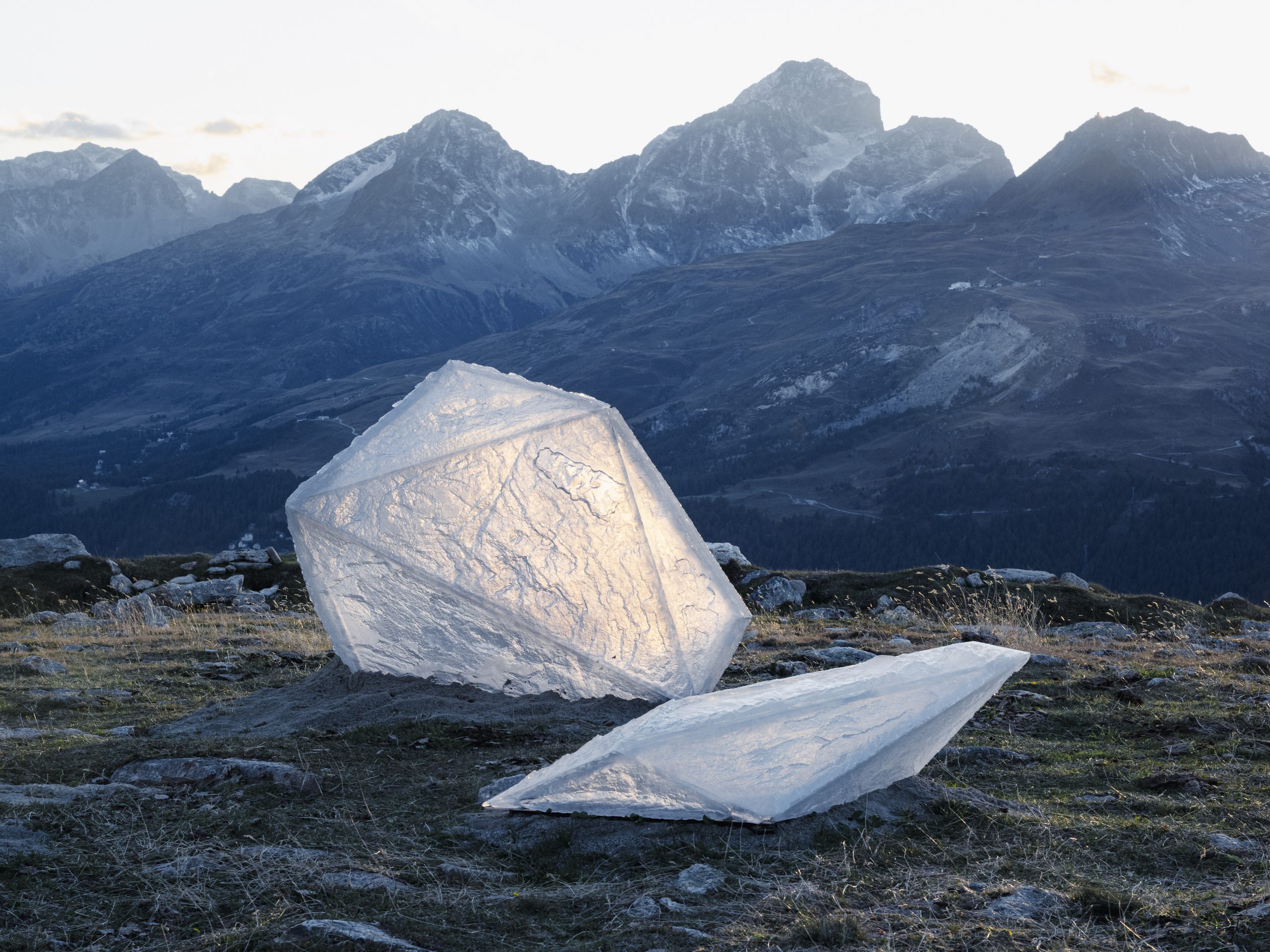
The sheer scenic majesty of the Muottas Muragl summit in Switzerland’s Livigno Alps is hard to describe, at once both awe-inspiring and humbling. A sunset viewed from this vantage will be imprinted on your mind forever. Now imagine hiking through this alpine paradise and coming upon a cluster of stylized glistening glass icebergs. Your borderline mystical, one-with-nature experience has gotten all the more surreal, courtesy of the artist Douglas Mandry.
“The sculptures should be a trigger for imagination and reflection,” Mandry said of Gravity Flow, his five-sculpture public installation. It was unveiled last month and will remain on display (for those lucky and brave enough to make the trek to see them) through August 2023. In an area defined by its extreme weather conditions, the semitransparent works will have a constantly changing backdrop and appearance due to the swirling elements and shifting light. But Gravity Flow (2022) is more than an aesthetic achievement. The sculptures touch on serious themes, including humans’ part in ecological turmoil and the nature of time—as well as how time could be running out.
“Notions of time and space are very present in my projects,” said Mandry. “I see my work as a non-linear reinterpretation of reality.” The sculptures are made from 100% recycled glass, which has special resonance for the artist. “The handiwork of glass is a thousand-years-old cultural legacy,” Mandry explained. “It has gone through time and technological evolution, yet it is still used very much as it was in the past. Glass is omnipresent in our everyday life. It can be fragile, but it is also extremely dense. All those paradoxical qualities brought me to experiment with glass and come up with large, heavy sculptures based on an immaterial visualization of volatile nature.”
Douglas Mandry combined scientific research, mountaineering, and art. Courtesy of La Prairie.
Mandry is a Swiss native, and Gravity Flow was sponsored by the Zurich-based luxury skincare brand La Prairie. The project has a global and universal scope, however. As part of his research process, Mandry accompanied ETH Zurich glaciology professor Daniel Farinotti on an expedition to the Rhône glacier. “Being on a glacier is always a powerful and unique experience,” he said. “It reminds me of our own fragility. Ice is a fizzing source of information, a crystallization of the past. It contains bubbles of air from a million years ago.” Farinotti’s team used a three-dimensional scanner inserted into the vertical channels carved by melting ice to measure erosion. The scans supplied the data for digital models that inspired the shapes in the artwork, which reflect these hollowed-out cavities within the ice.
Mandry has been fascinated by glaciers since 2018, creating photograms of melting ice for his “Monuments” series. The artist has also explored other subjects in nature for his art practice. “I started working on corals being illegally exported,” he explained, “as well as the shifting of natural elements such as sand, which is one of the most threatened materials in the world.” But glaciers will continue to resonate.
A mirage in the mountains: Douglas Mandy’s Gravity Flow (2022). Courtesy of La Prairie.